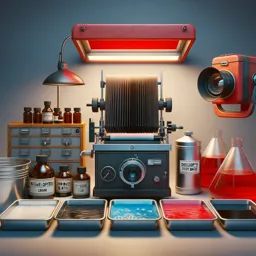Introduction
Photo retouching is an essential aspect of modern image editing, enabling designers and artists to enhance the visual appeal of their photographs. Among the numerous techniques in this field, color correction stands out as one of the most powerful ways to elevate your images to a professional standard. Whether you are a beginner or looking to refine your skills, understanding color correction tools and workflows can make a significant difference in your retouching projects.
What is Color Correction?
Color correction is the process of adjusting colors in a photograph to achieve a more realistic or desired look. It addresses common issues such as incorrect white balance, color casts, underexposed shadows, or overexposed highlights. Proper color correction ensures your images look natural and vibrant, making them suitable for portfolios, publications, or digital content.
Why is Color Correction Important in Photo Retouching?
- Enhances image realism: Brings images closer to what the human eye perceives.
- Establishes mood and style: Helps convey a specific atmosphere or artistic direction.
- Improves consistency: Ensures a uniform look across a series of photos for branding or storytelling purposes.
Essential Tools and Techniques for Color Correction
1. White Balance Adjustment
Start by setting the proper white balance to remove unwanted color casts. Most image editing software offers eyedropper or slider tools to neutralize whites and balance all colors in the image.
2. Curves and Levels
The Curves and Levels adjustments control the tonal range of your photographs, allowing targeted corrections to shadows, midtones, and highlights. This can help recover lost details and fine-tune overall brightness.
3. Hue/Saturation
Selective color correction can be achieved using Hue/Saturation sliders. Boost or subdue specific colors to enhance certain elements or match a desired palette.
4. Color Grading
After corrective adjustments, color grading adds branding or artistic flair. Split toning and color wheels can infuse mood by tinting shadows and highlights separately.
Common Challenges in Color Correction
- Shooting in mixed lighting: Different light sources can create difficult color balances.
- Overcorrection: Over-saturating colors or overly brightening images can reduce realism.
- Monitor calibration: Edits may not appear consistent on uncalibrated monitors; regular calibration is recommended.
Practical Tips for Effective Color Correction
- Work with RAW files for the most editing flexibility.
- Use adjustment layers for non-destructive editing.
- Regularly compare your edits with reference images or the original file.
- Zoom out often to check the overall color harmony.
Conclusion
Color correction is a cornerstone of photo retouching that transforms ordinary images into extraordinary works of art. With the right tools, techniques, and a keen eye, you can elevate your photography and design projects to the next level. Invest time in mastering color correction, and you’ll reap the rewards in every visual you produce.

























